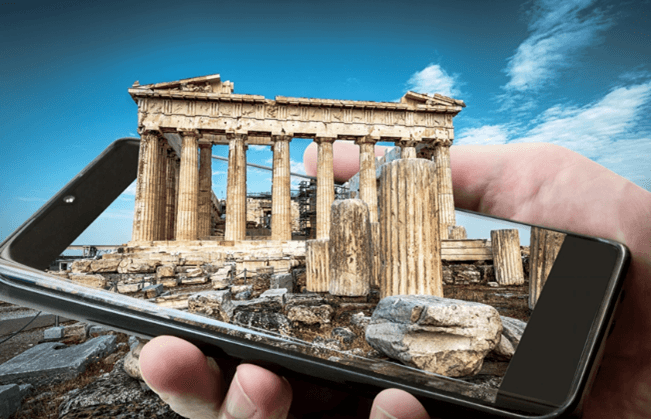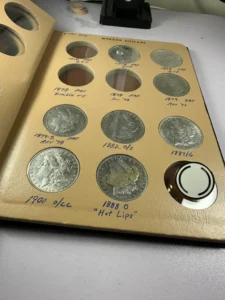There’s something magical about standing in front of a centuries-old sculpture, knowing it has witnessed lifetimes. But in today’s world, culture doesn’t just live in museums or dusty archives; it lives online. And thank goodness it does.
From ancient manuscripts to sacred textiles, cultural treasures are vulnerable — earthquakes, floods, neglect, and even war. That’s why I’ve become fascinated with how we can protect culture in the digital age. Not just to preserve, but to give people around the world access to their history, identity, and roots.
Let me take you on a journey, a personal and global one, about how we’re digitizing, protecting, and sharing humanity’s most precious cultural assets.
1. Digitizing to Save What’s Disappearing
When Notre Dame’s spire collapsed in 2019, I remember watching it burn on my screen, heartbroken. But then came the hopeful part: using 3D scans, architects could digitally reconstruct it with startling accuracy. That’s the power of digitization.
Cultural institutions today scan and photograph objects, books, and even entire ruins to make permanent digital twins. It’s like time-travel armor for fragile things.
2. Metadata: The DNA of Cultural Files
It’s not just about capturing an image; it’s about telling its story. I once scanned an old photo from my grandmother’s album, but without dates or names, it was just… a photo. That’s where metadata comes in.
Metadata tags tell us who, what, where, and why, preserving the context that makes culture meaningful. Think of it as the DNA of the digital artifact.
Organizations like Europeana use standardized metadata to make collections searchable, findable, and context-rich across borders.
3. Storage Isn’t Sexy, But It Saves
Here’s something nobody tells you: digital files die just like physical ones. Hard drives crash. Formats expire. I’ve lost files from 2012 that I swore were backed up.
That’s why professionals use:
Redundant cloud systems
Digital object identifiers (DOIs)
Emulation techniques
Projects like LOCKSS (Lots of Copies Keep Stuff Safe) by Stanford University ensure long-term access to digital archives.
4. 3D, AR, VR & The Metaverse: New Portals to the Past
Once, I virtually walked through a Mayan temple on my iPad. No plane ticket, no sunburn, just awe.
Technologies like Virtual Reality (VR) and Augmented Reality (AR) let us explore fragile or inaccessible heritage sites. The metaverse is adding a whole new dimension.
Examples include:
VR walkthroughs from the British Museum and The Louvre
LiDAR scanning by projects like CyArk and the Smithsonian Digitization Program
5. Digital Repatriation: Returning Culture with Pixels
Some artifacts were stolen. Let’s not sugarcoat that. While physical repatriation is complex, digital repatriation offers a profound alternative.
Today, Indigenous communities collaborate with institutions to digitize items and store them in community-led digital archives. Platforms like Mukurtu CMS, built by and for Indigenous people, help protect cultural protocols.
It’s more than access — it’s ownership and sovereignty in the digital realm.
6. When Everyone Becomes an Archivist
One rainy afternoon, I uploaded old family photos to an oral history archive. It felt small, but powerful.
Crowdsourced platforms like:
Rekrei
Tirtha
…allow citizens to contribute photos of destroyed or endangered sites. These inputs help reconstruct monuments and preserve endangered stories.
This democratizes preservation. We are no longer bystanders — we’re participants.
7. Tech + Ethics: Protecting the Sacred
Here’s the tricky part: not all cultural material should be online.
Digital sharing needs consent. Some sacred practices, songs, or symbols aren’t meant for global consumption.
Tools like Traditional Knowledge (TK) Labels empower creators to mark content as:
“Secret”
“Sacred”
For community use only
This isn’t censorship. It’s respect.
8. Future-Proofing: What Happens When Tech Moves On?
Remember floppy disks? Imagine if your entire tribal song archive lived on one.
That’s why cultural institutions are constantly:
Updating formats
Improving accessibility
Training staff
The future of preservation isn’t static. It evolves — and so must we.
9. Funding the Future of Culture
Digitization costs money, and passion isn’t enough.
Thankfully, funders like:
UNESCO
The Mellon Foundation
Creative Europe
…are stepping in. But we need more.
Cultural tech deserves the same investment as biotech or fintech. After all, heritage is humanity’s original operating system.
10. AI & Blockchain: The Cutting-Edge Allies
AI is being used to:
Repair ancient texts
Colorize historical footage
Analyze oral traditions
I’ve seen AI revive voices from scratchy 1950s recordings. Spooky but moving.
Meanwhile, blockchain offers tamper-proof ledgers for provenance and ownership. Imagine NFT-backed artifacts that preserve creator credits and ethical sourcing.
The Louvre meets the ledger.
11. Cultural Tech Is Human Tech
At the heart of this whole movement is a simple truth: technology should serve people, not erase them.
Every scan, every backup, every digital exhibit should connect real humans with real meaning.
Whether you’re a museum curator or just someone digitizing grandma’s recipes, you’re helping humanity remember who it is.
Conclusion: Culture for the Next 10,000 Years
We are the first generation to digitize culture on this scale, and the last who will remember life before it.
Protecting cultural assets in the digital age isn’t just about backup drives and metadata. It’s about building bridges between generations, honoring the voices of the past, and safeguarding the soul of humanity.
Let’s ensure that 10,000 years from now, someone can still listen to our music, admire our monuments, and smile at our stories. Because in the end, culture is what makes us human.
And that’s worth protecting — byte by byte, heart by heart.






